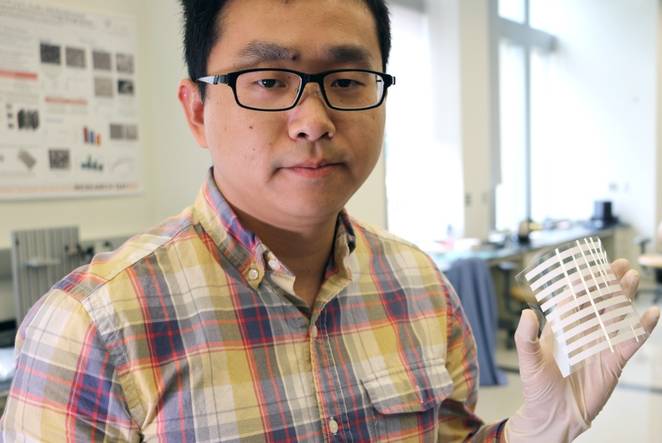Source: treehugger.com
Published: November 8, 2016

© Virginia Tech
Integrating solar panels into windows and walls seems to be the obvious next step for the technology, but what about all of the light indoors? What if there could be a way to harness, or recycle, that light energy along with the light from the sun?
Researchers at Virginia Tech have proven that it’s possible. Mechanical engineer Shashank Priya along with a team of engineers and chemists have developed a new type of flexible solar panel that can absorb both the direct light of sunlight as well as the diffuse light of LED, fluorescent and incandescent lighting.
The super-thin solar module can be produced through a low-temperature, low-cost screen printing technique that churns out the panels in rolls.
The solar tiles, which resemble flexible versions of bathroom tiles, can be combined together to make window shades or wallpaper. Just a single tile, about the size of your hand, can produce 75 milliwatts of power. If you put a few together to equal the size of a sheet of paper, you have enough power to recharge a smartphone.
“There are several elements that make the technology very appealing,” said Priya. “First, it can be manufactured easily at low temperature, so the equipment to fabricate the panels is relatively inexpensive and easy to operate. Second, the scalability of being able to create the panels in sheet rolls means you could wallpaper your home in these panels to run everything from your alarm system, to recharging your devices, to powering your LED lights.”
The flexible panels at 10 percent efficiency are right behind conventional rigid silicon ones that usually come in around 15 percent efficiency and the researchers believe they’ll not only catch up, but surpass their rigid counterparts soon. Of course, the list of potential applications already does.
The flexible panels can be made into any shape or design meaning that they could be used in a variety of ways both indoors and outdoors, like curtains, awnings, mobile charging stations, clothing and military gear. The flexible, lightweight design means that solar power doesn’t have to be a fixed technology, but can be a fully mobile one, working outdoors and in.
This article no longer exists at the Source link above. It can be found in the Matteroftrust.org Resource Library.
